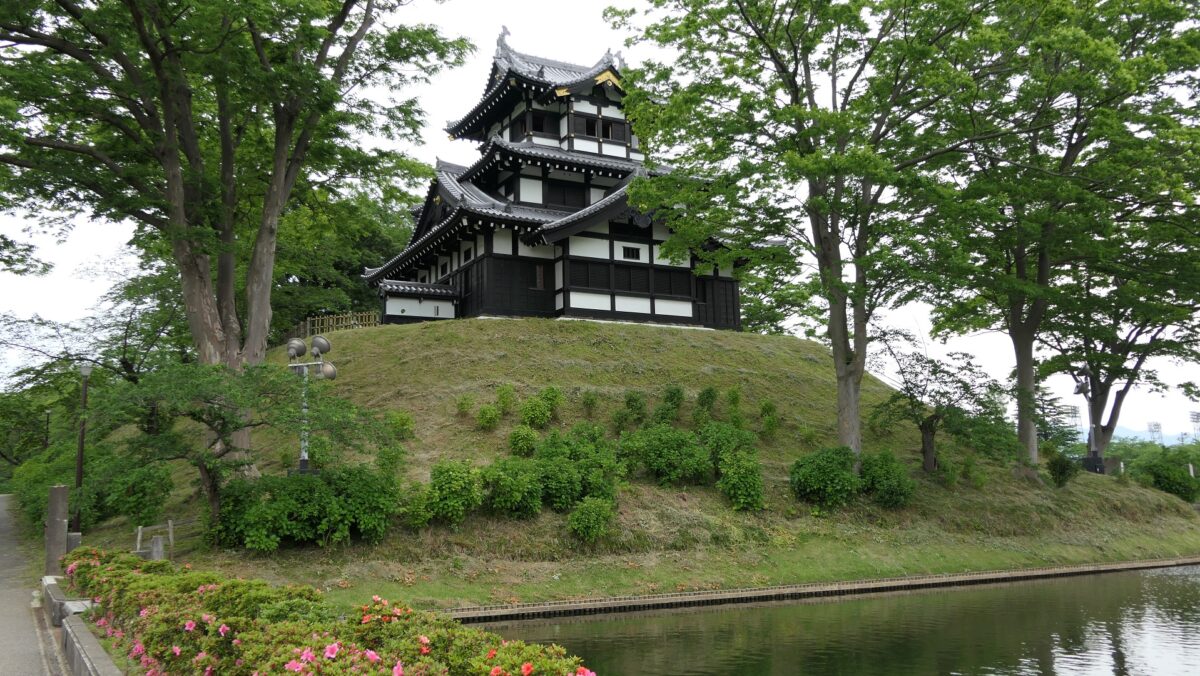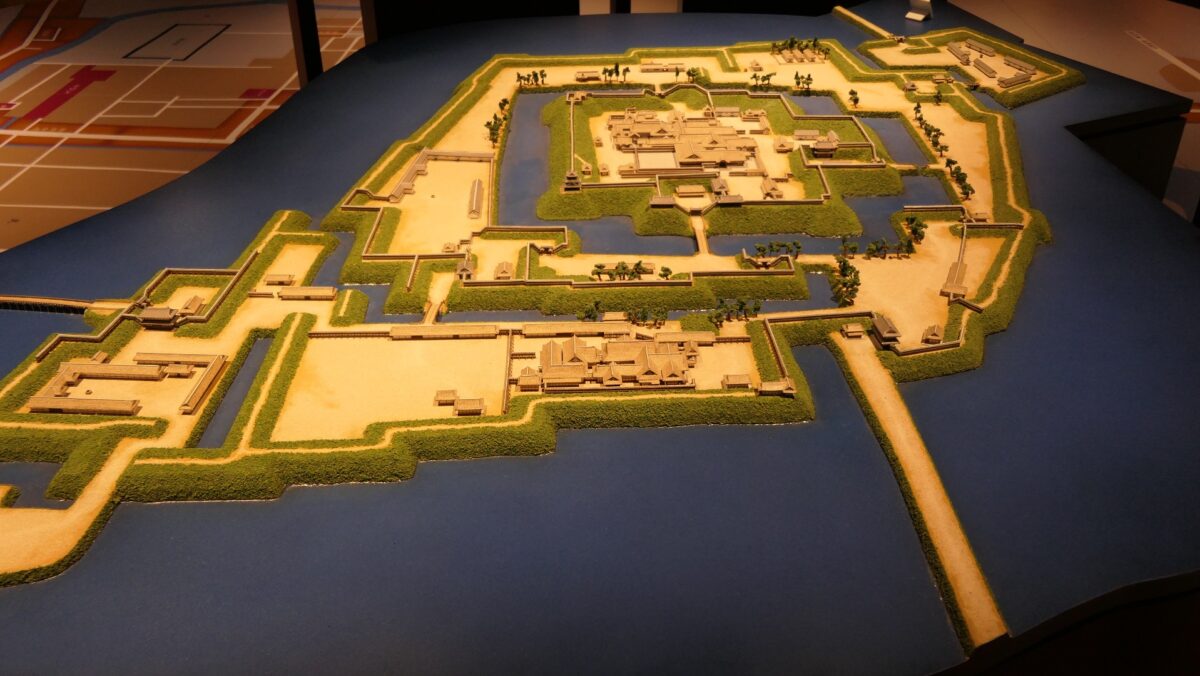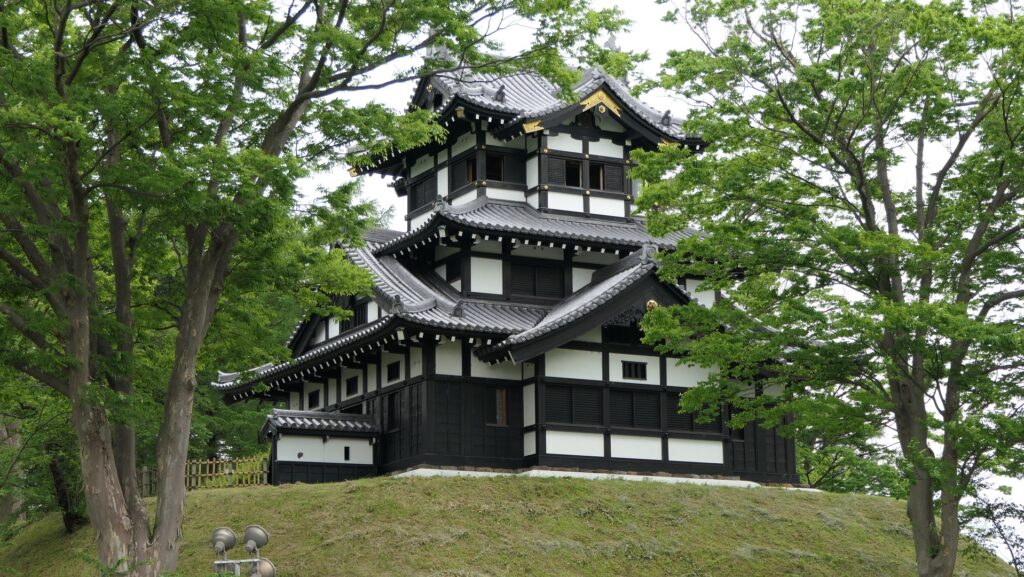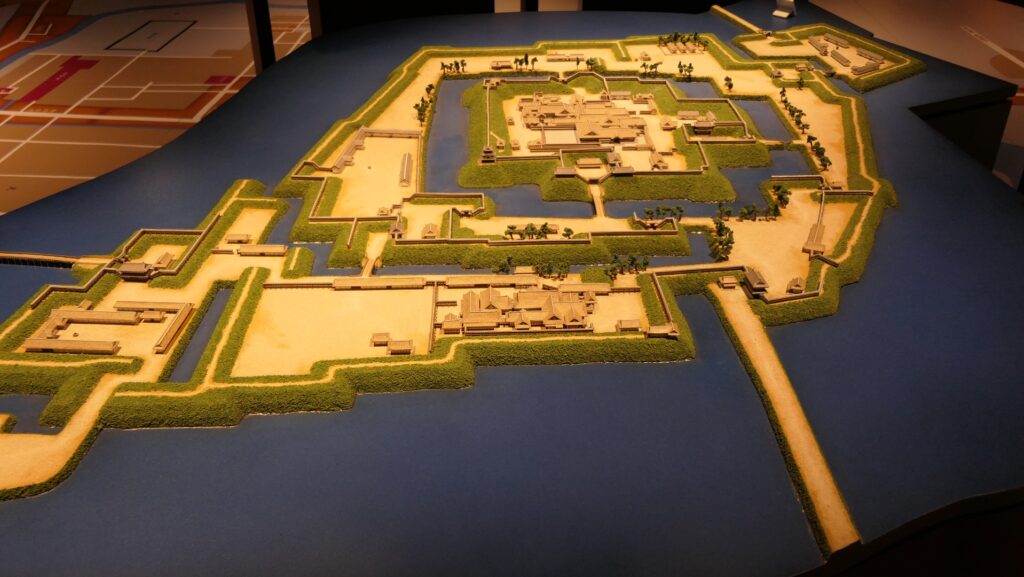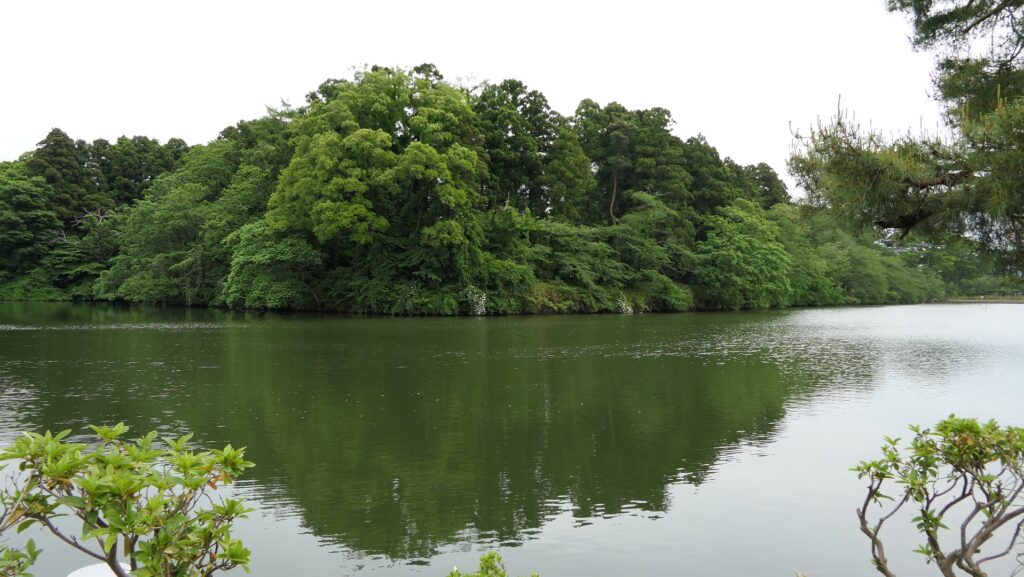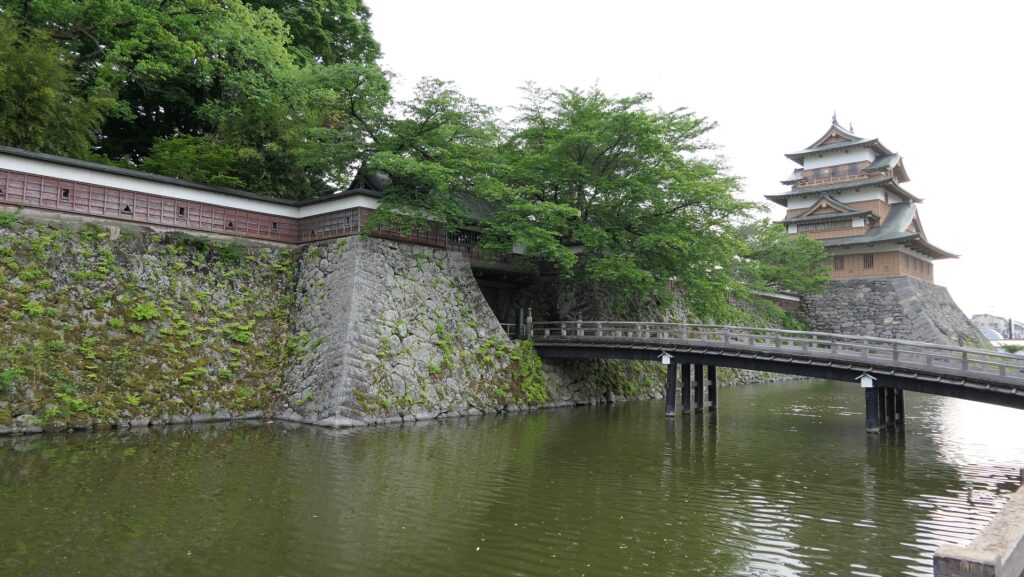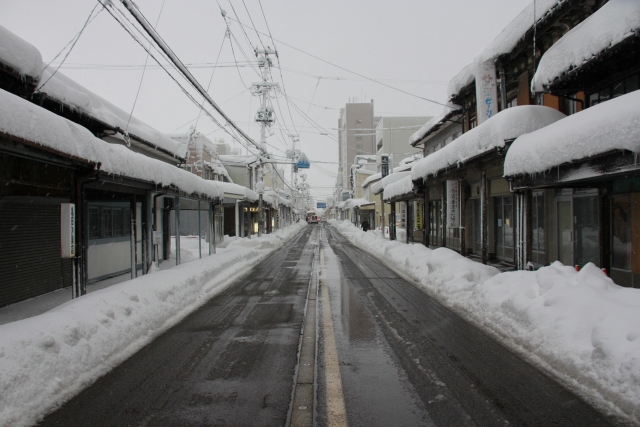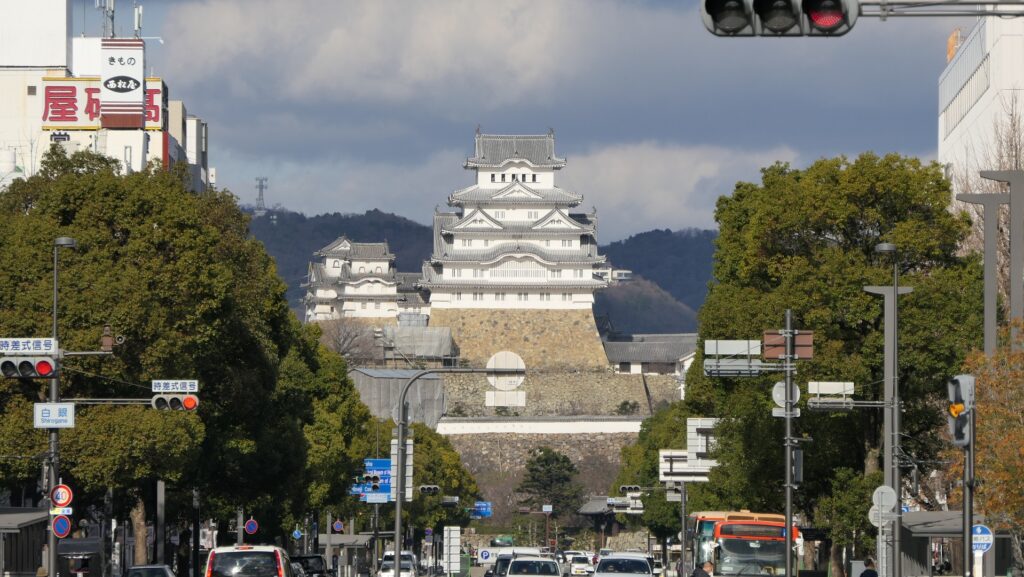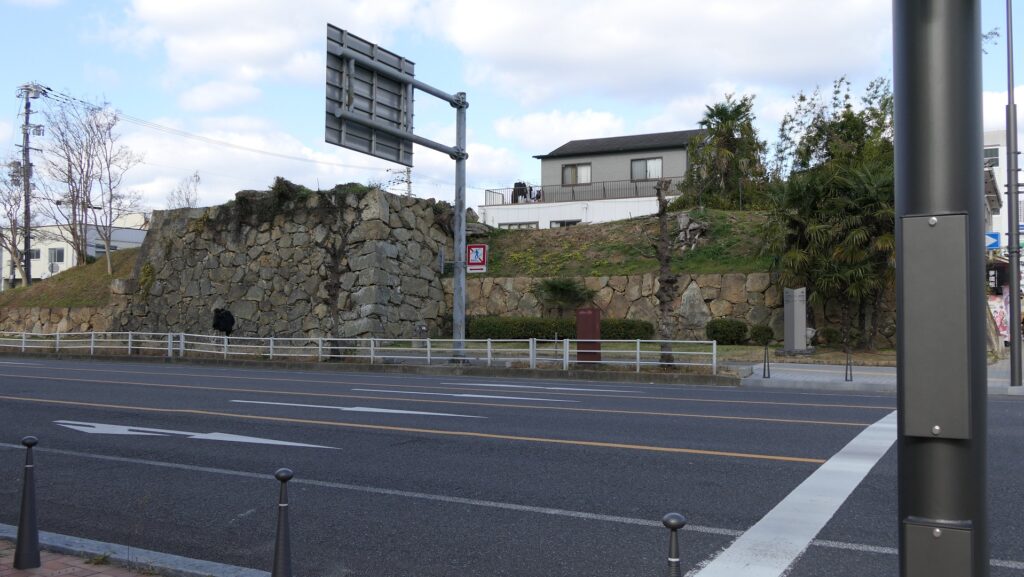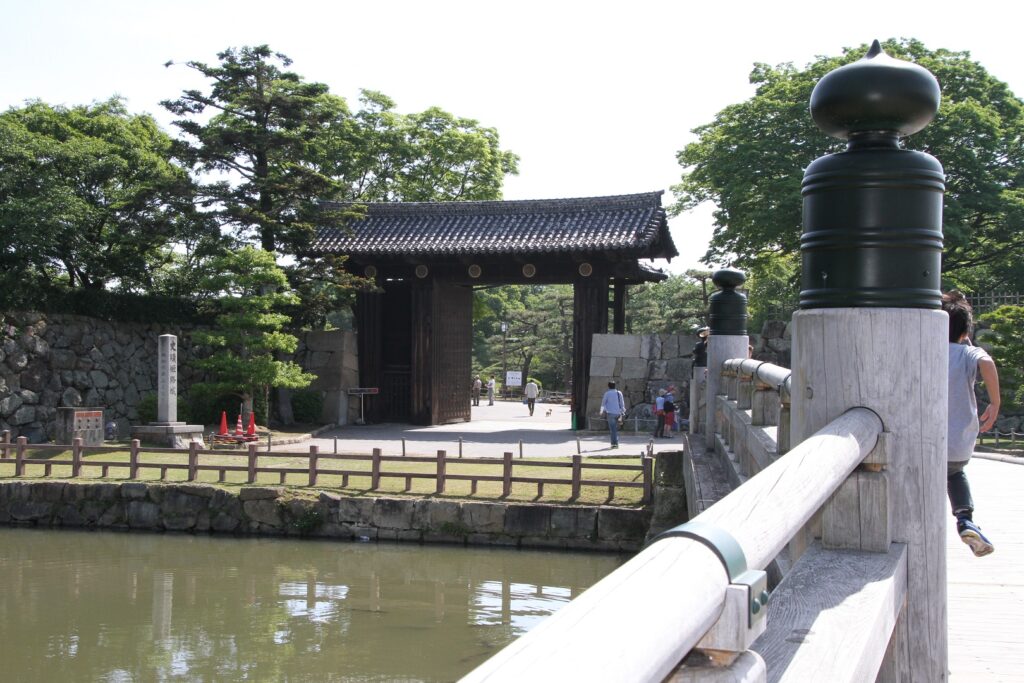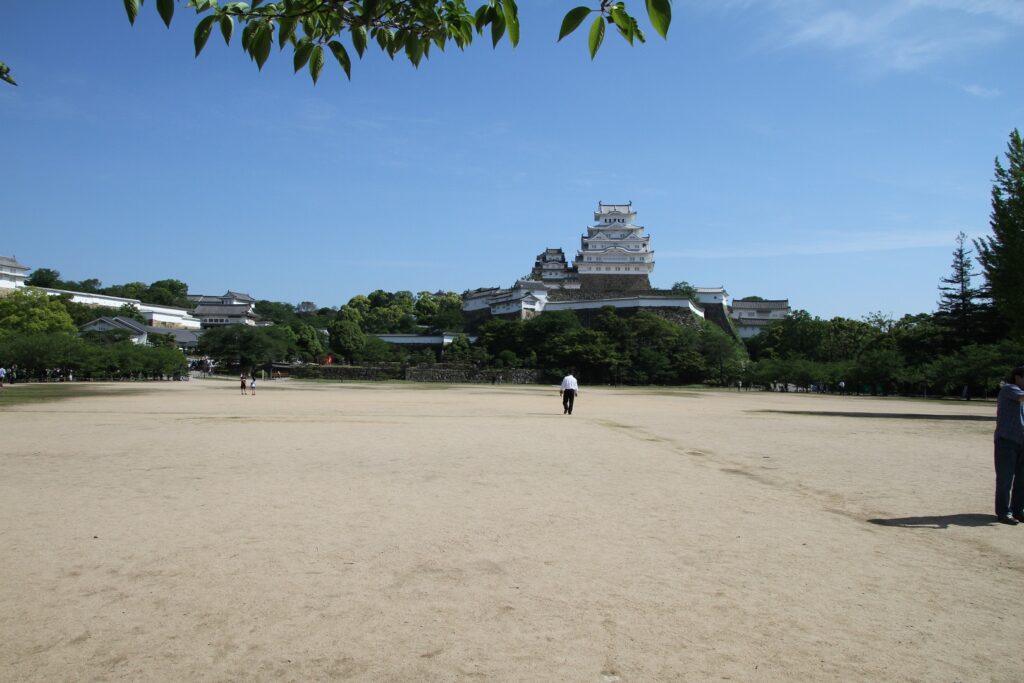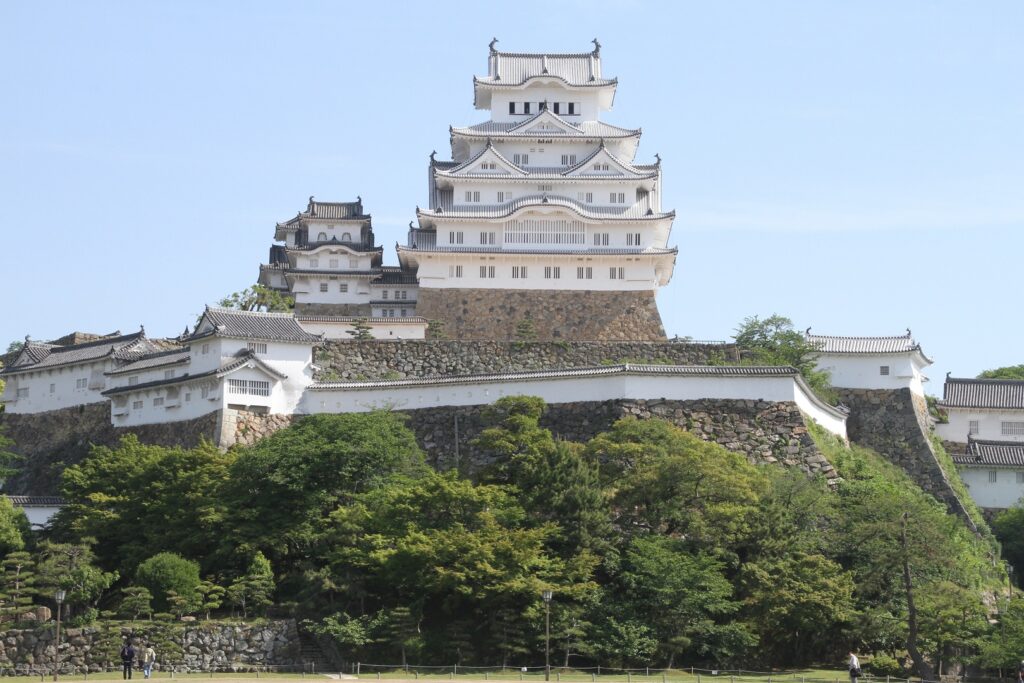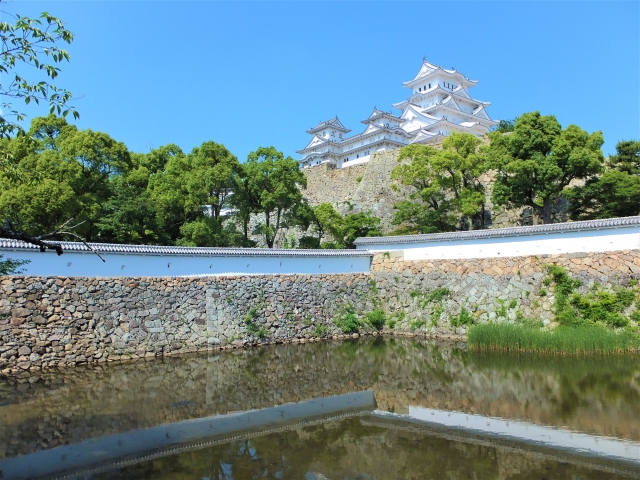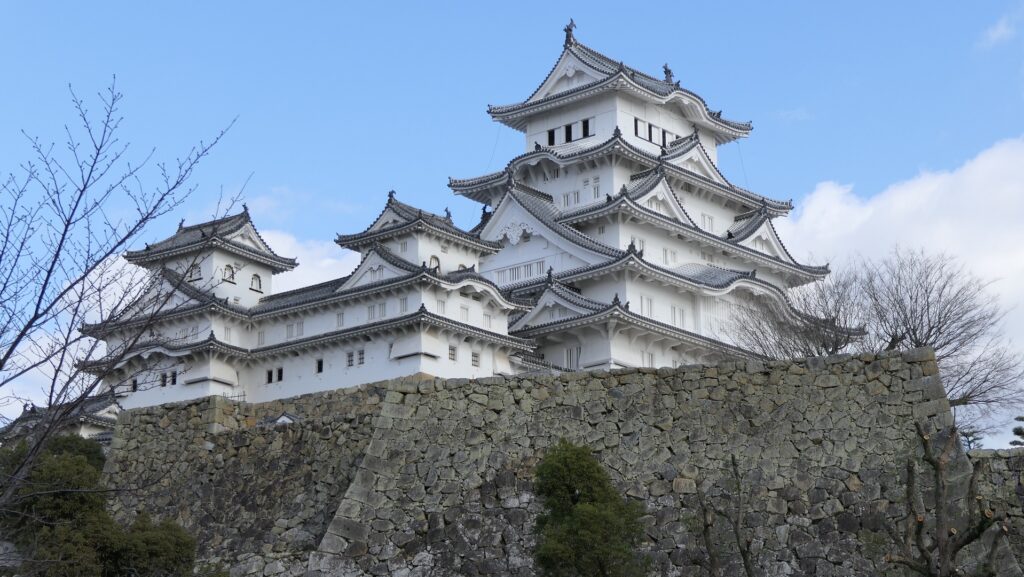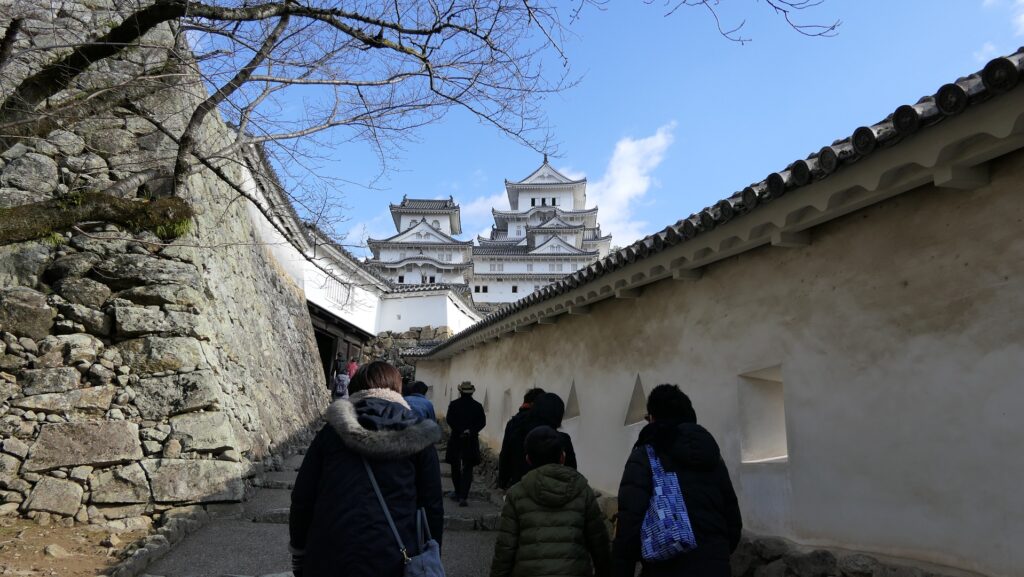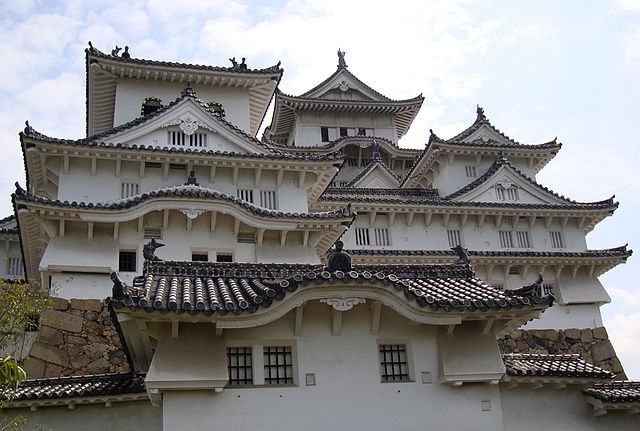Features
Wide and Long Water Moats remain
Now, the ruins of Takada Castle have been developed as the Takada Castle Site Park. The park is also very famous for the illuminated cherry blossoms and the lotus in the Outer Moat credited as “the largest in the East”. As for the castle ruins, the earthen walls of the Main Enclosure, the Inner Moat, and the western part of the Outer Moat mostly remained intact. If you visit the ruins from the west such as Takada Station, you will first see the remaining Outer Moat with a huge amount of lotus plants.
The aerial photo around the castle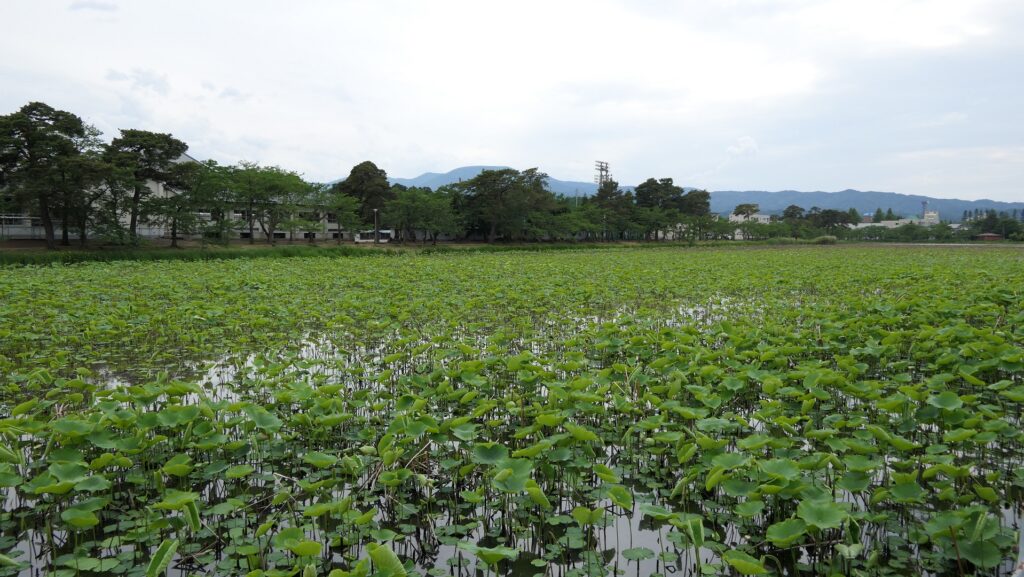
Center of Park – Third and Second Enclosures
The Outer Moat is still very large, which was at maximum 130m wide in the past. Even now it remains at about 100m wide. You can now go across the moat on the road to the Third Enclosure and the Second Enclosure inside. The Third Enclosure is used for the modern facilities such as a baseball stadium and an athletic field.
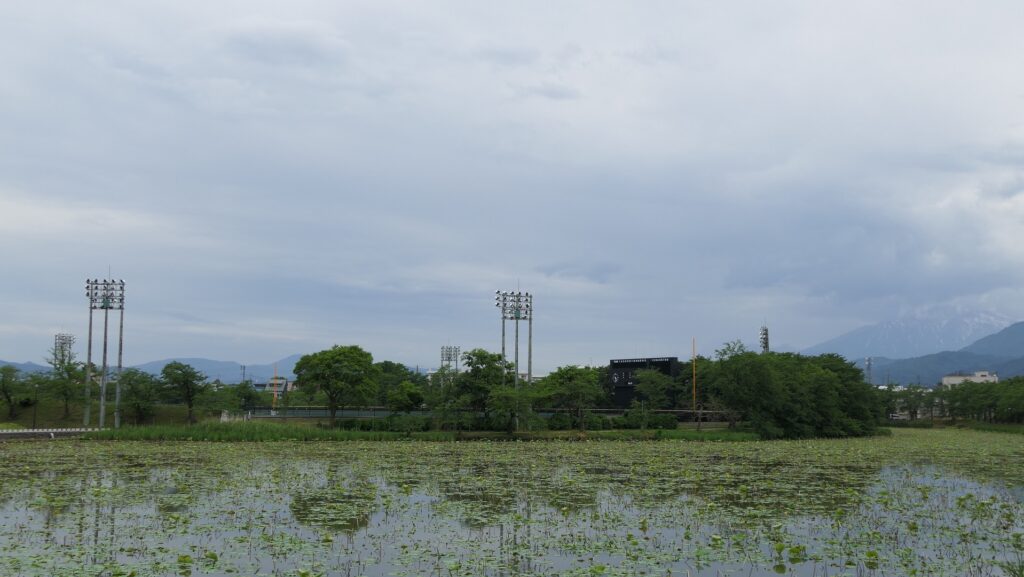
The Second Enclosure is the center of the park with a lot of cherry trees. You can walk along the promenade beside the Outer Moat. In fact, the high earthen walls were built along the moat, but they were removed when a Japanese Army started to use the castle ruins.
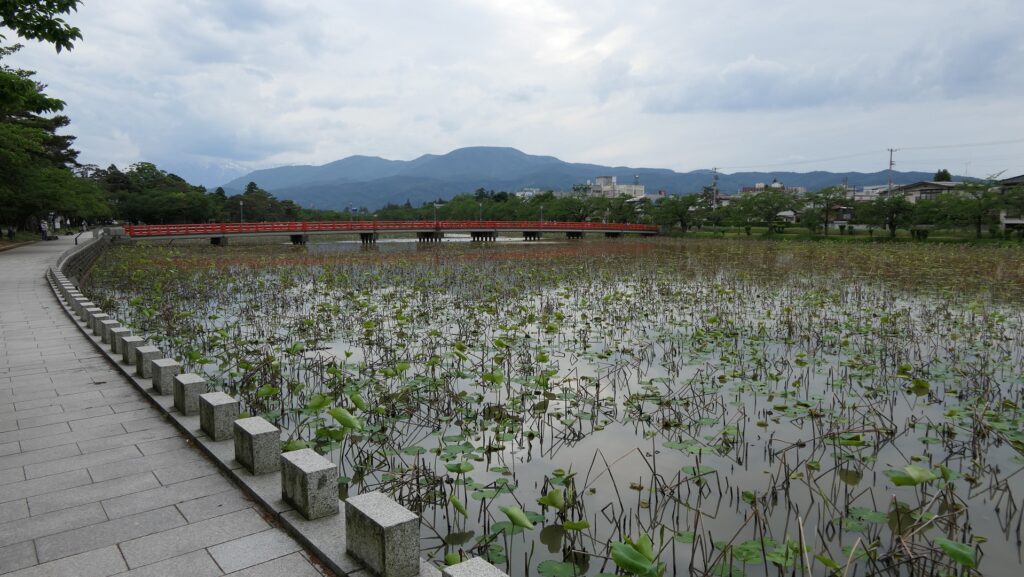
There is also the Joetsu City History Museum in the enclosure where you can learn more about the castle and the area around.
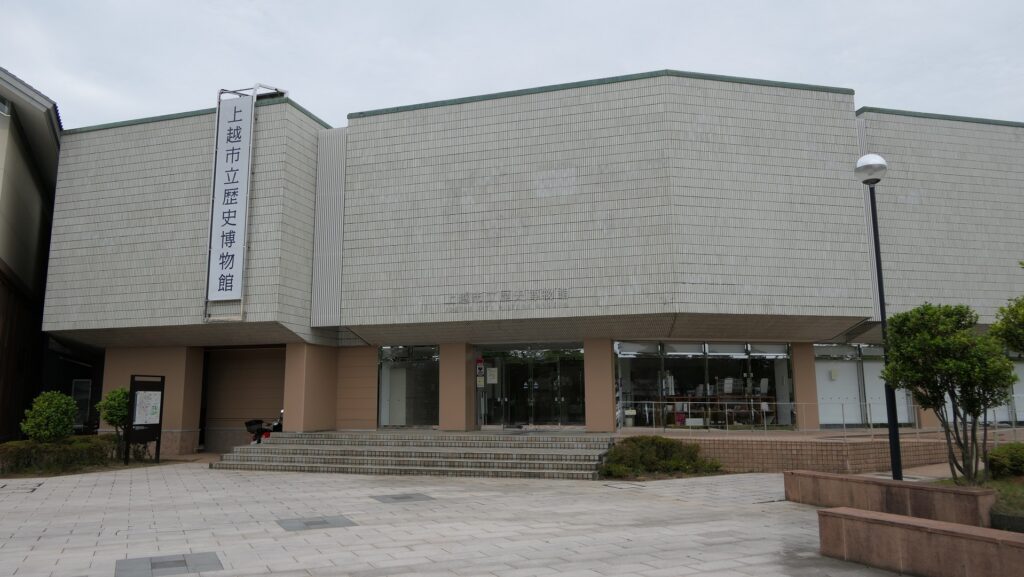
Main Enclosure and Rebuilt Three-Story Turret
The Main Enclosure surrounded by the Inner Moat and the earthen walls have three entrances for visitors. The first one is the former front gate from the restored wooden bridge called Gokuraku-bashi outside on the south.
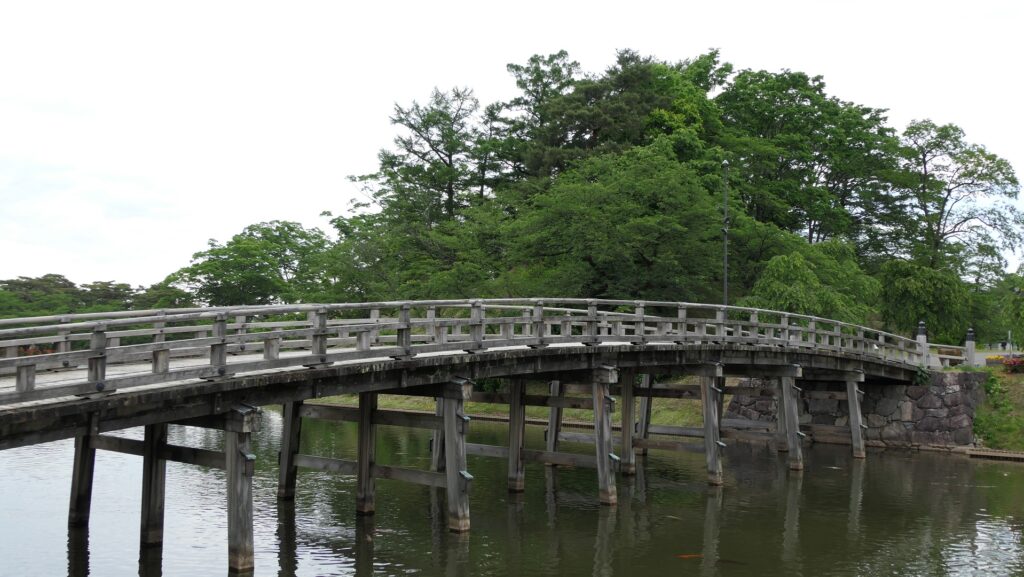
The second one is the ruins of the Higashi-akazu-mon Gate on the east.
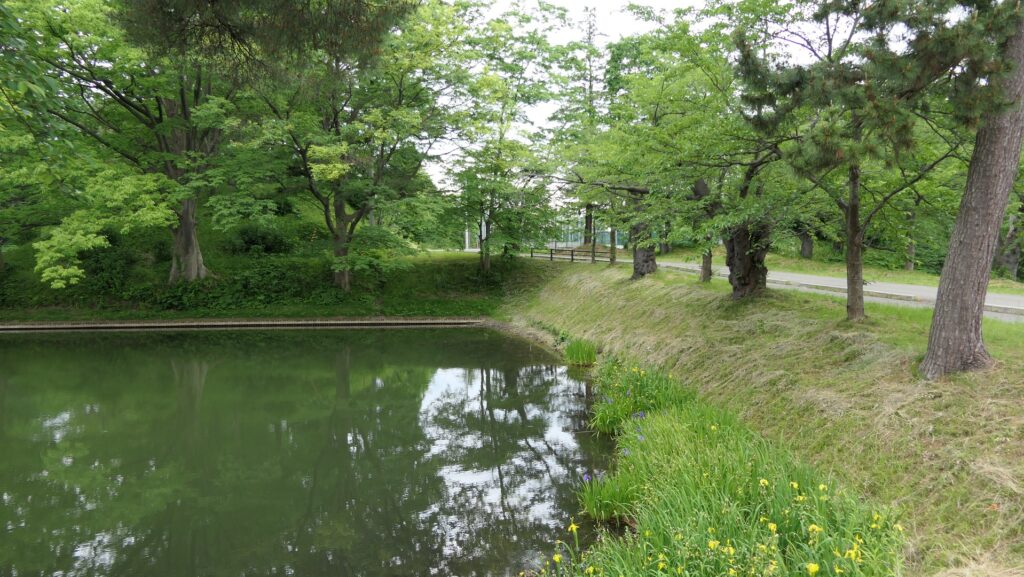
The last one is on the west and was built by the Japanese Army in the modern times.
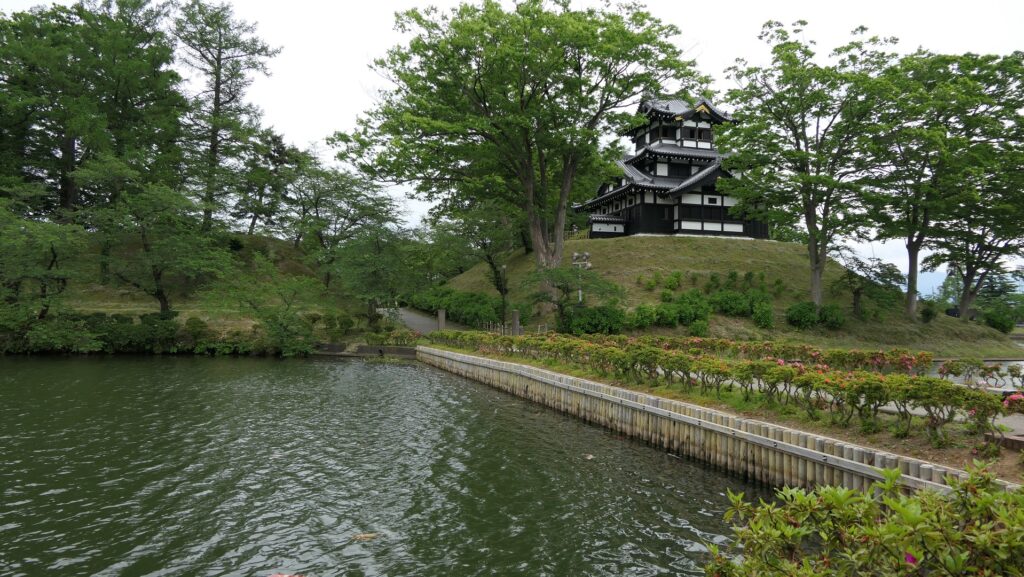
The Three-story Turret was also rebuilt in 1993 on the earthen walls at the southwest corner of the Main Enclosure, based on the successful excavations and studies. The turret is in fact a steel building, but it looks traditional because of the many wooden materials used.
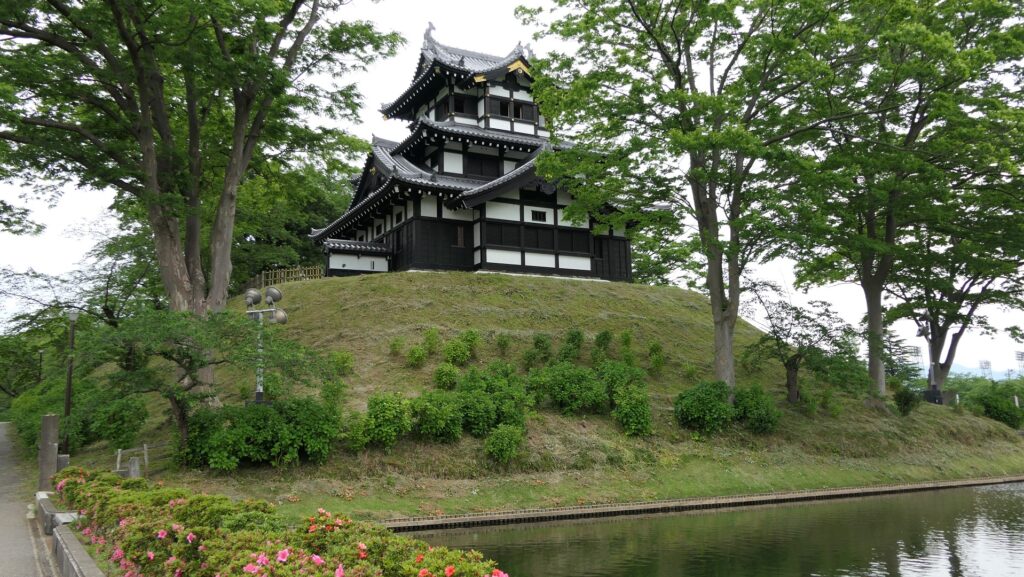
Its interior is used as a museum and as a sightseeing tower. You can also see a good contrast of the Inner Moat, the earthen walls and the turret from the outside.
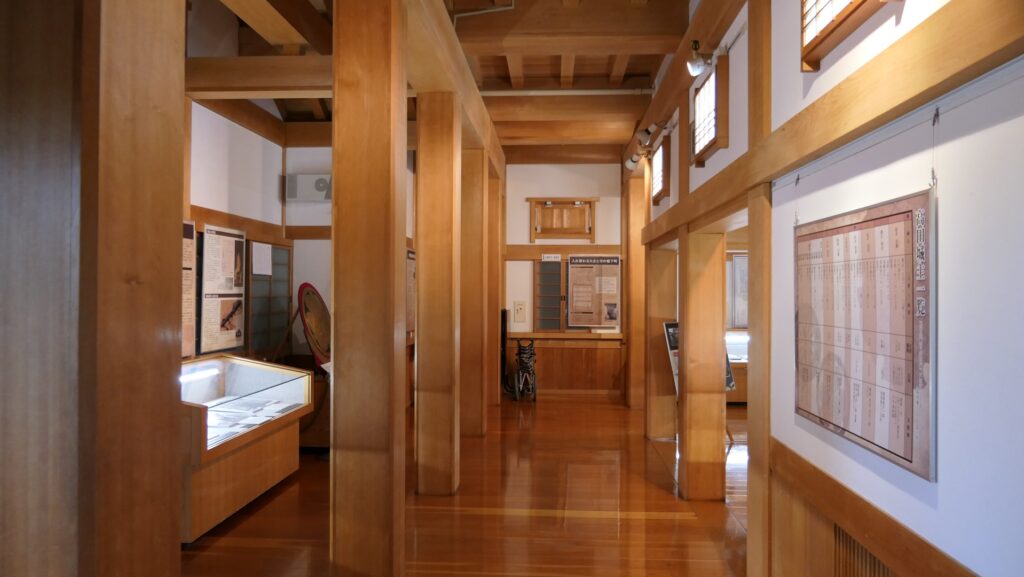
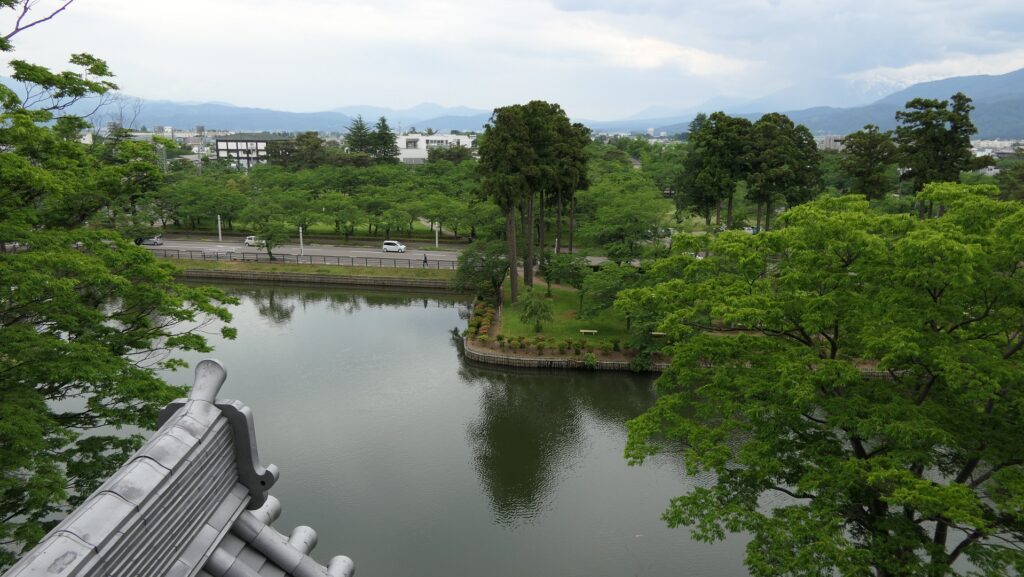
The inside of the enclosure was used as the Main Hall for the lord of the castle, and is now used as a school.
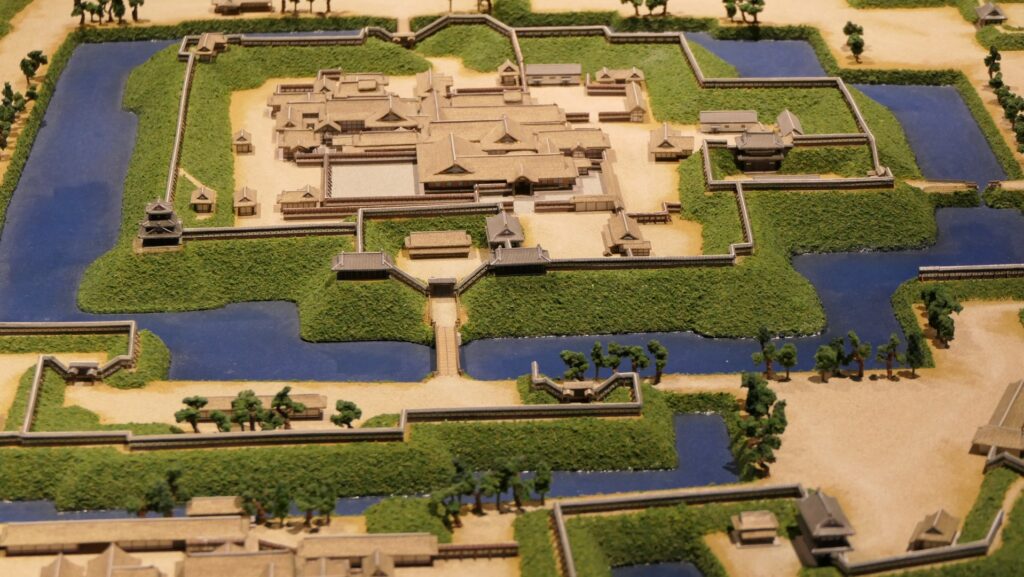
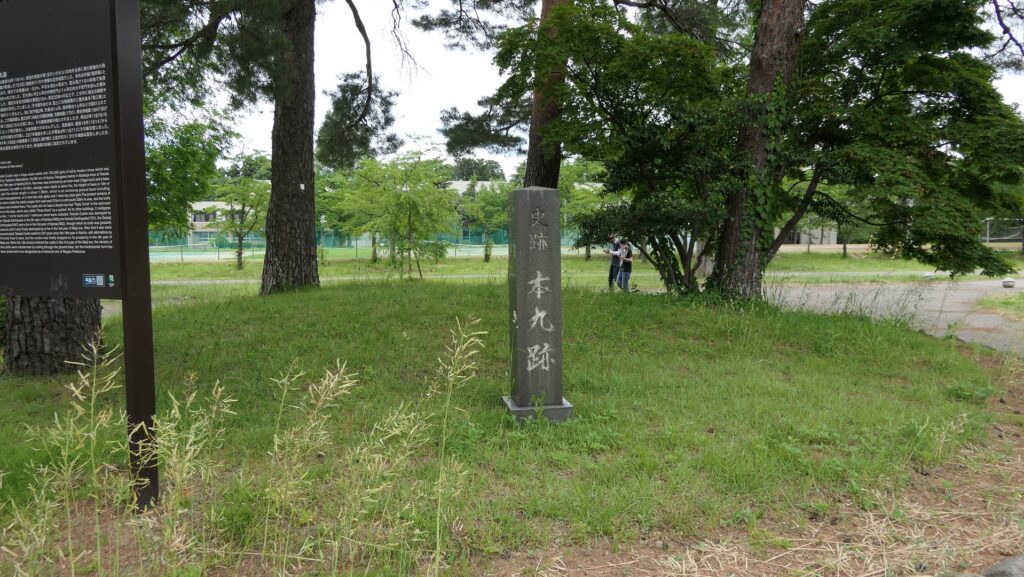
To be continued in “Takada Castle Part3”
Back to “Takada Castle Part1”

